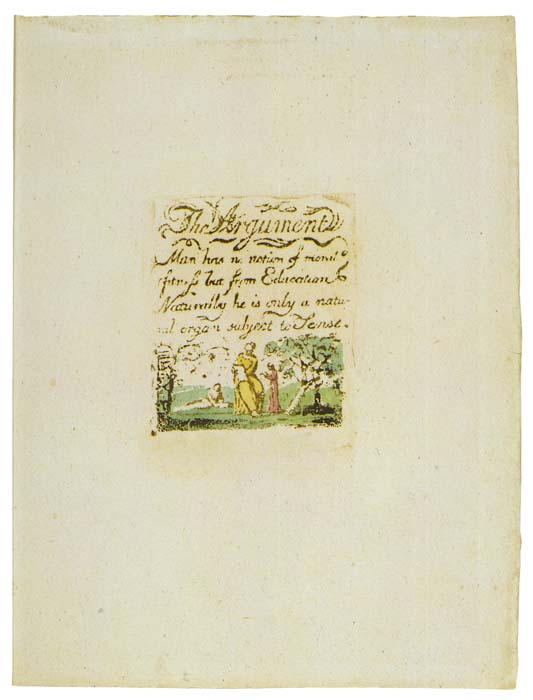
This early work in relief etching was once thought to predate Blake's illuminated books. Current scholarship, however, dates it to about 1794. Rather than a sequential narrative, it is a series of aphorisms with emblematic images. Blake developed this relief etching technique for incorporating text and image on one printing surface. In addition to two copies of this work, the Morgan owns one unique plate from copy L, presented by Sir Geoffrey Keynes in 1977. This copy once belonged to Blake's follower Frederick Tatham.
William Blake (1757-1827), There Is No Natural Religion, London, Copy G, ca. 1794, PML 44733.1
